Interior Design’s Favorite Animal Print Gets a Fierce New Update
When the late Zelina Comegys Brunschwig, the long-serving head and chairman of Brunschwig & Fils, came up with the motto “Good design is forever,” she not only summed up the company’s mission but also got to the heart of why its Les Touches pattern continues to be a favorite among designers.
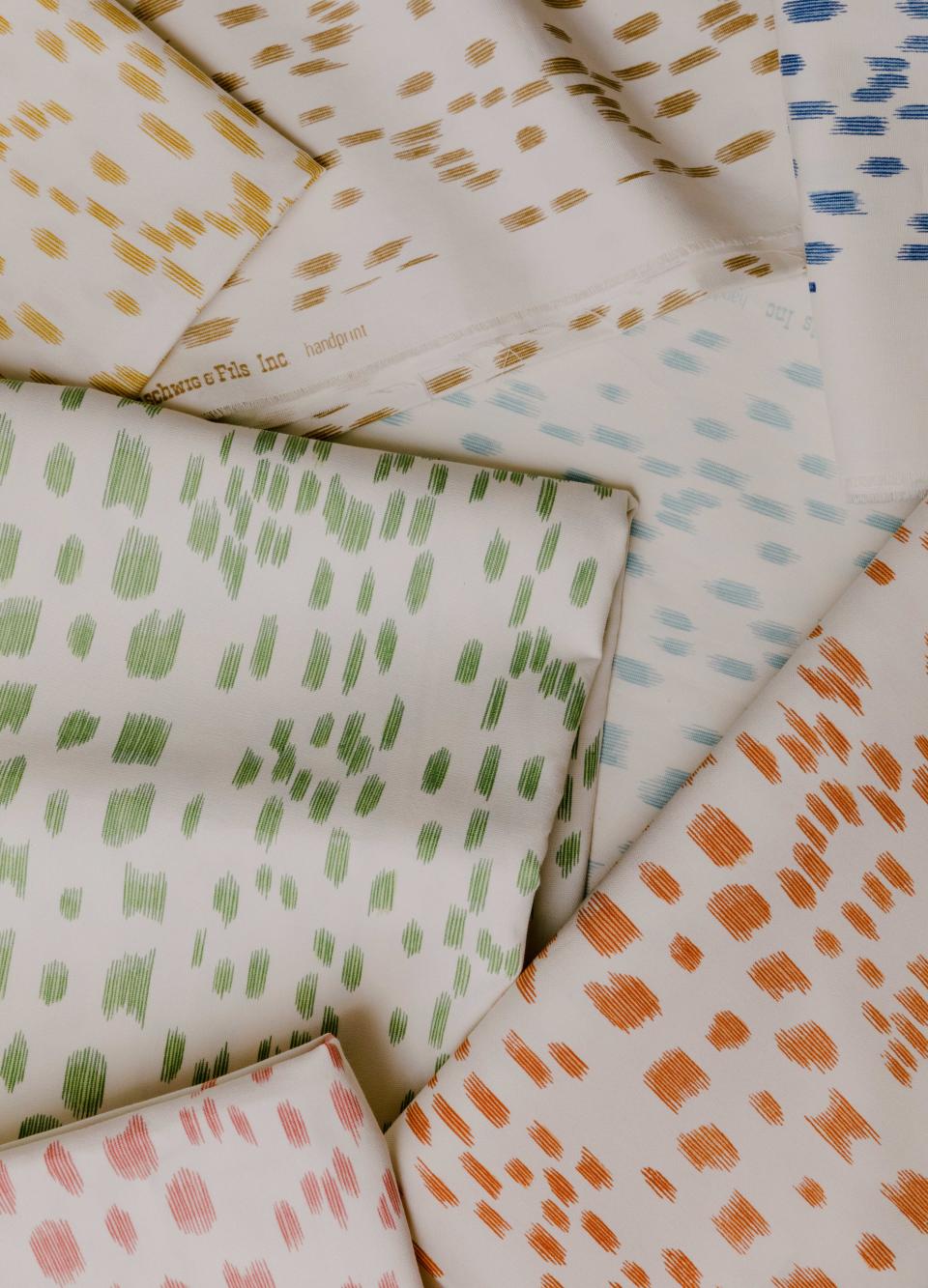
LesTouches3
For more than 50 years, the pattern—an elegantly distilled depiction of an animal print—has been much sought-after and ubiquitous. It has spotted wallpaper and bedding, camouflaged sofas and chairs, and slinked across table linens. Inspired by a post–World War II folio of photographs, Brunschwig & Fils first introduced Les Touches to its collection in 1965, and since then it has only grown in popularity. (The company was acquired by Kravet in 2011.)
“It’s one of our best selling patterns in fabric print and wallpaper. And because it’s just such an iconic pattern and it’s so popular, people have been asking us—whether it’s clients, interior designers, architects, our sales reps, our showrooms—for more colors,” Danielle St. George, the director of design at Brunschwig & Fils, tells AD PRO. “They wanted a rainbow of colorways.”
With the print in such high demand, the company decided it was time to expand its offerings. This past spring, the company launched nine new colorways of the beloved pattern. St. George credits the pattern’s widespread appeal to its timeless aesthetic. “It has a longevity to it because it’s simple and in its design it is graphic,” St. George says. “It feels light, it feels happy. And it’s just one of those patterns that can get mixed into any sort of scheme.”
St. George and her team kept a running list of the colors most frequently requested, ranging from beige to yellow to aqua. Designers now have a spectrum of 18 colors from which to choose. “We are known much more for color rather than neutrals,” St. George says. However, she notes that the brand has broadened its color palette, adding subdued tones like Sand and Gray, as well as more vibrant hues, such as Tangerine, Peridot, and Canary.
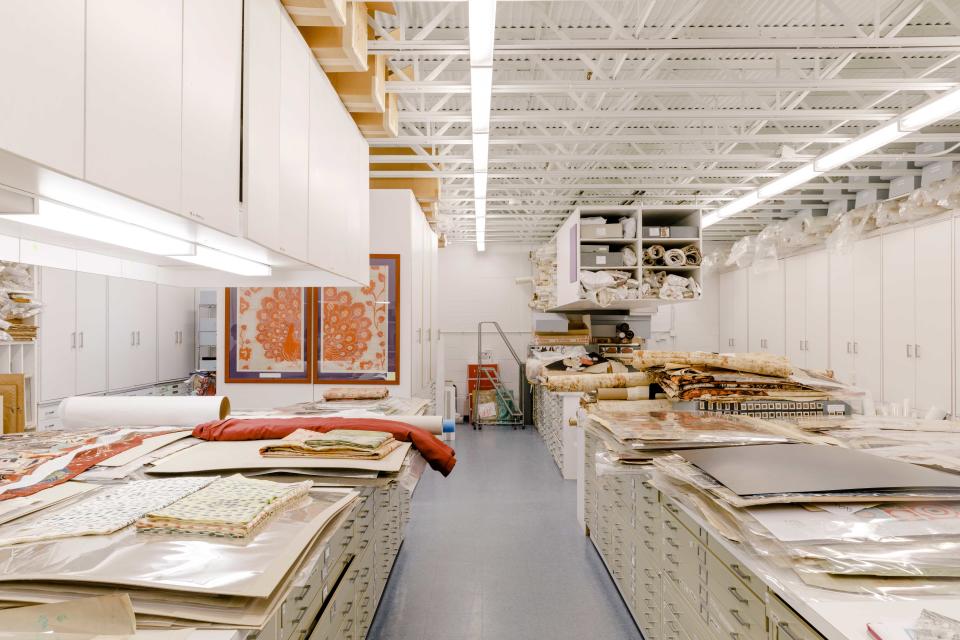
LesTouches4
Focusing on local craftsmanship, Brunschwig & Fils has all of its fabric and wall coverings screen printed by hand at U.S. mills, which also allows for a quick turnaround of its products. “Because it’s local, the wait time is really short,” says St. George. “The demand from the customers is really high, and then we can deliver [the product] very fast as well.” She also sees another benefit: “A lot of businesses are not screen printing anymore. They’re going digital. It’s nice to support domestic product and not go overseas.”

Les Touches5
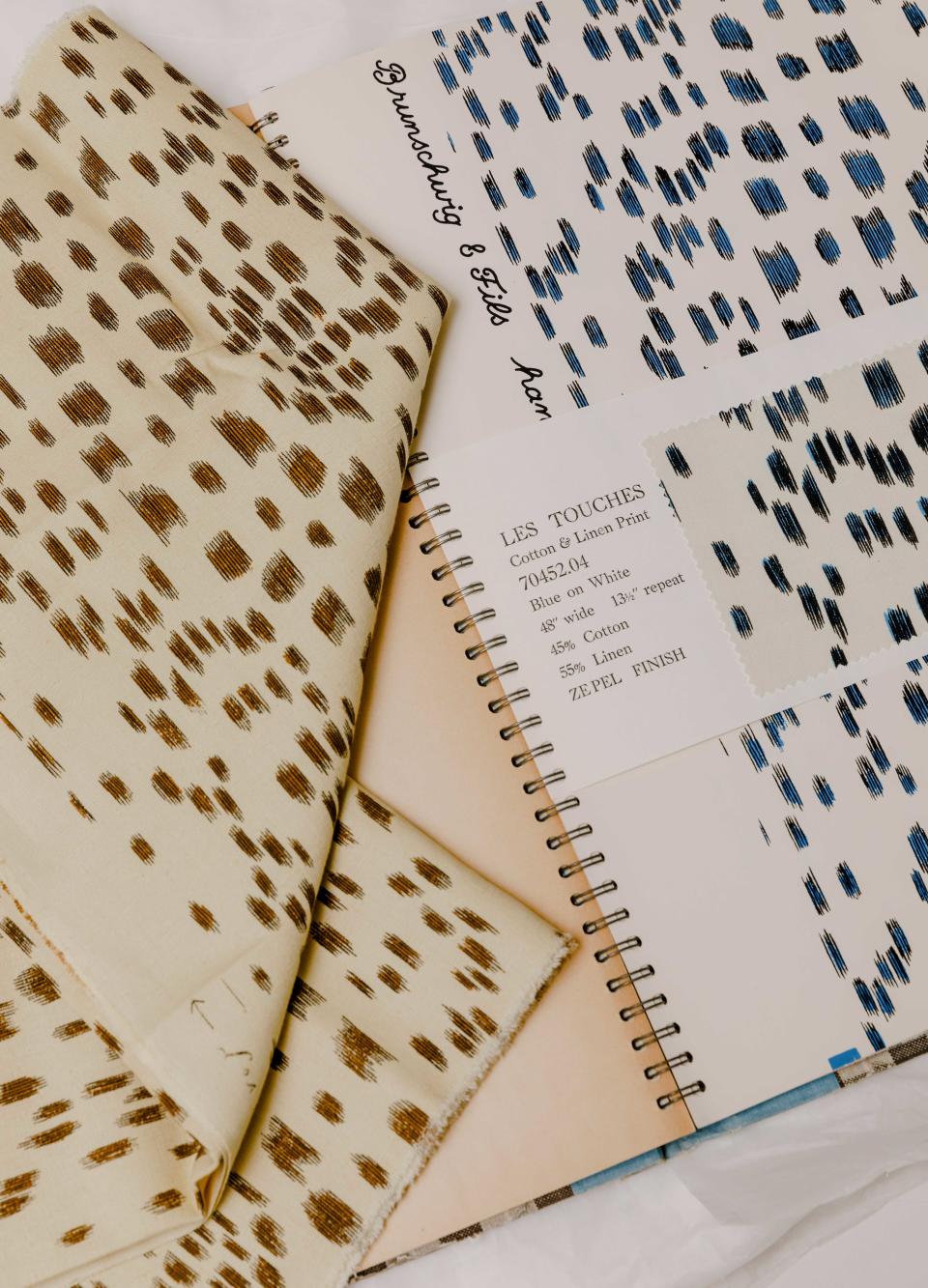
LesTouches1.jpg
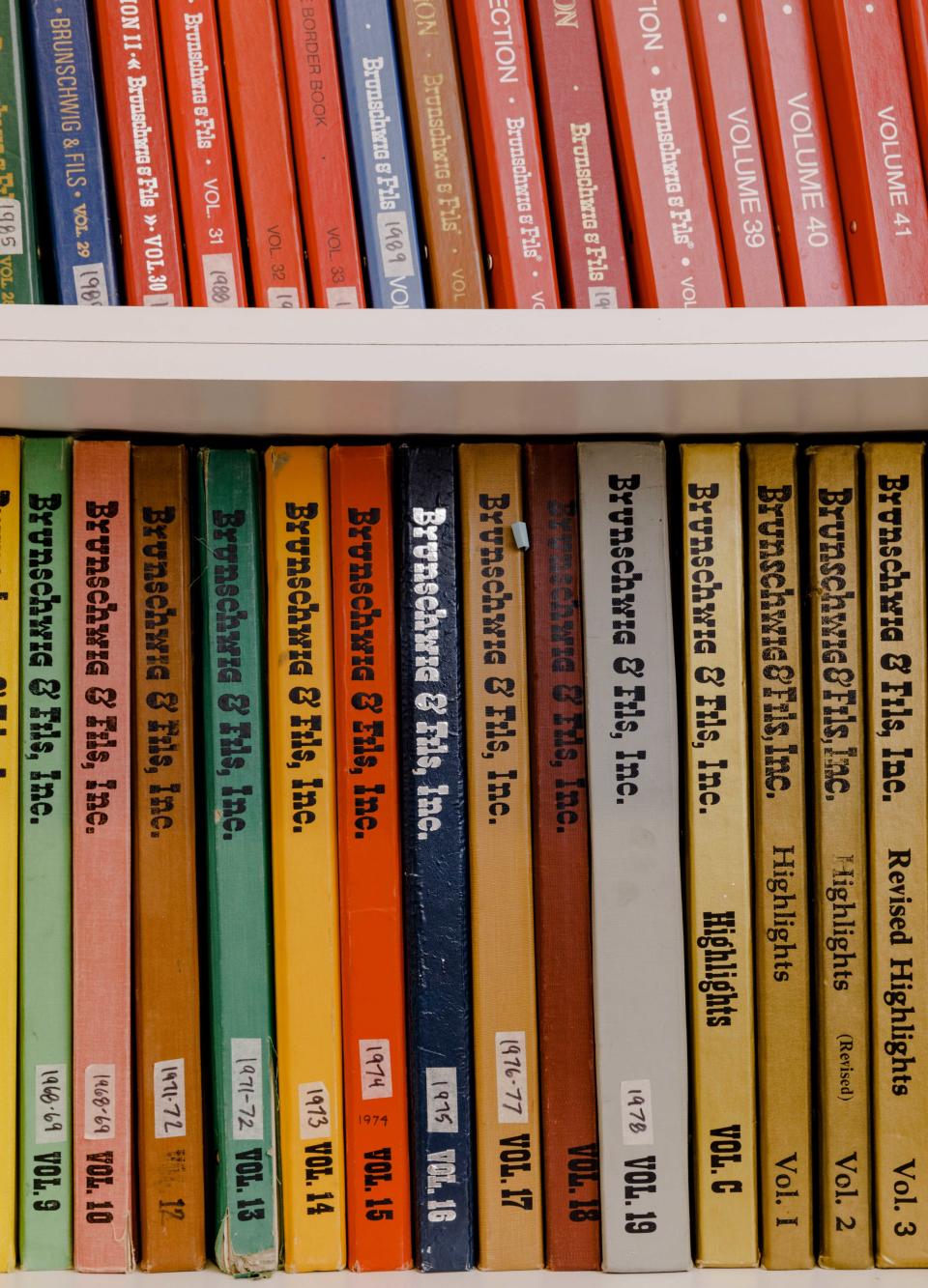
Les Touches 6
The new range of colors, coupled with the speedy production, continues to position Les Touches as the go-to pattern for the interior design world. “I think the draw and love of the pattern is because it’s so universal in its application,” St. George explains.
And designers agree. As the brand’s most popular print on social media, Les Touches can be seen mixed and matched with other patterns and in a variety of contexts, modern and traditional, in nurseries and in living rooms. The company recently did its own research by combing through Instagram posts to see how designers have used the print, and asked those designers why it remains such a staple. “It can make a dominant statement on its own or it can bridge other patterns perfectly,” said designer Danielle Rollins, who covered an entire kitchen in Les Touches, from the drapery to the wallpaper (she is also known to make clothes out of the print).
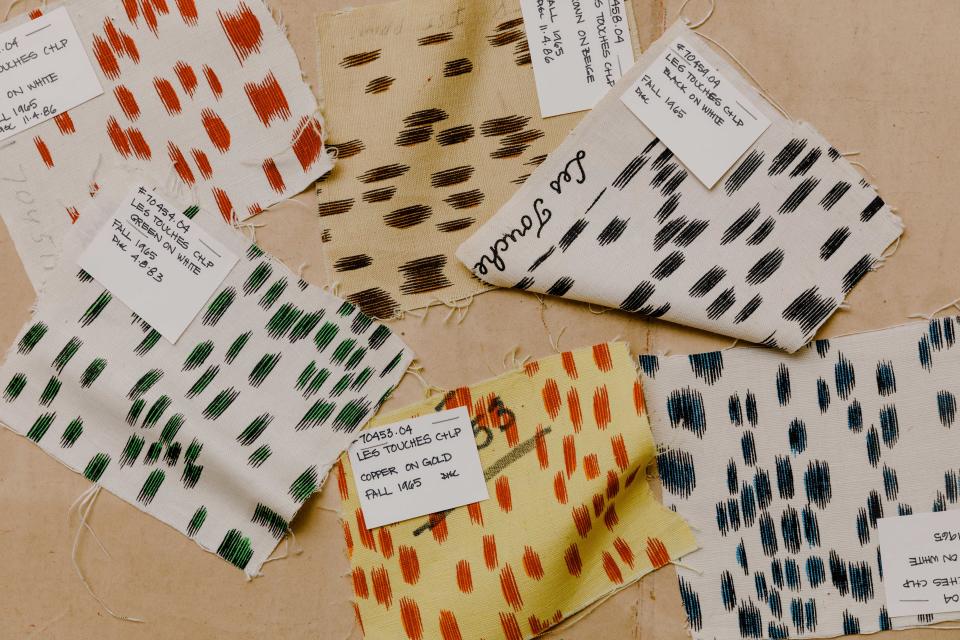
Les Touches 10
For designer Meg Braff, it is the pattern’s versatility that makes it so appealing. “Les Touches is the kind of classic pattern that can fit into nearly every home and decorating style. I have used it in probably every colorway and even a few custom iterations throughout my career,” Braff noted. “Les Touches is graphic, a bit animal print, a bit tribal, and always fresh and fun.” And now, the designer will have a whole new spectrum of colors to add to her toolkit.
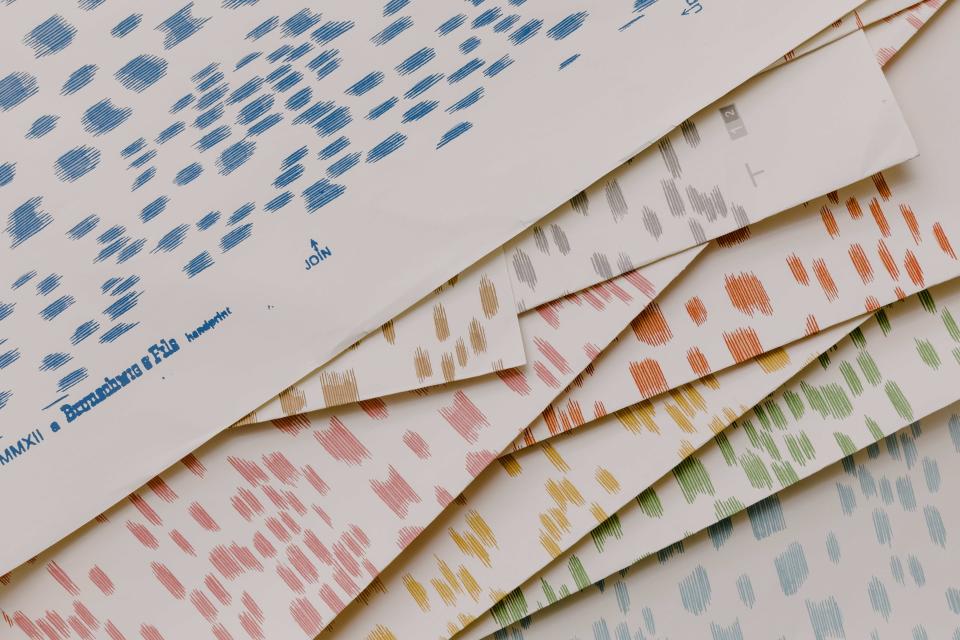
Les Touches 9
Originally Appeared on Architectural Digest

